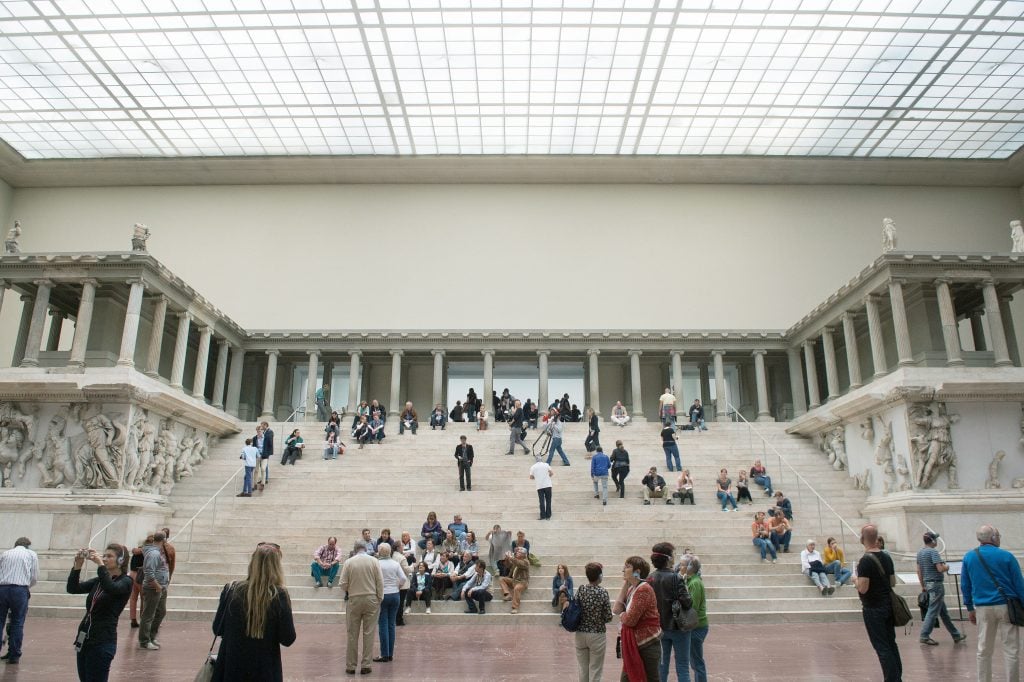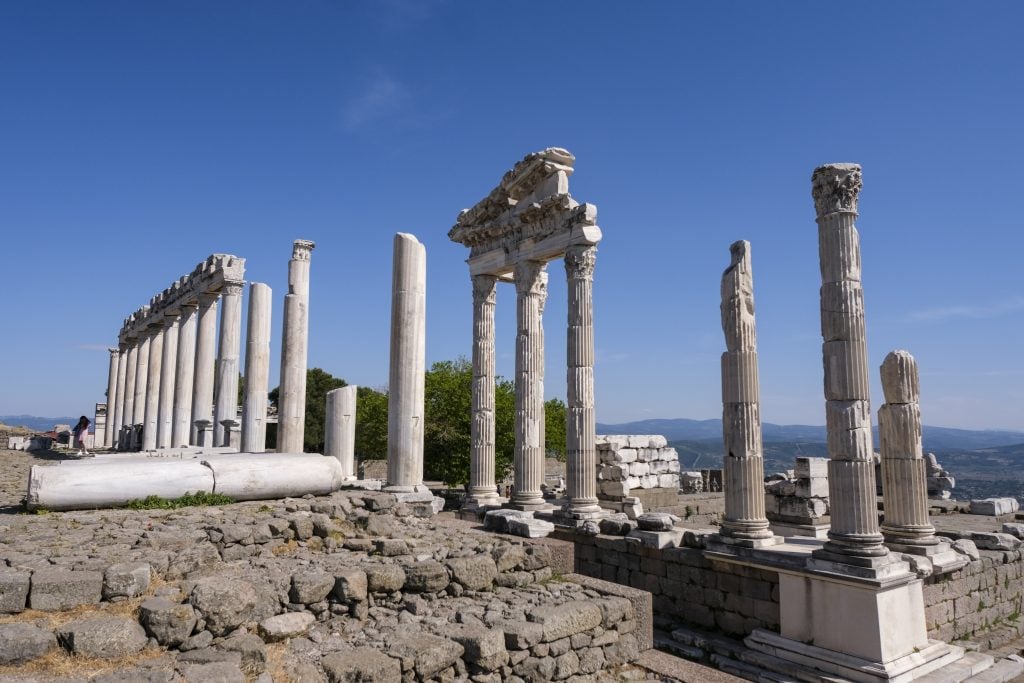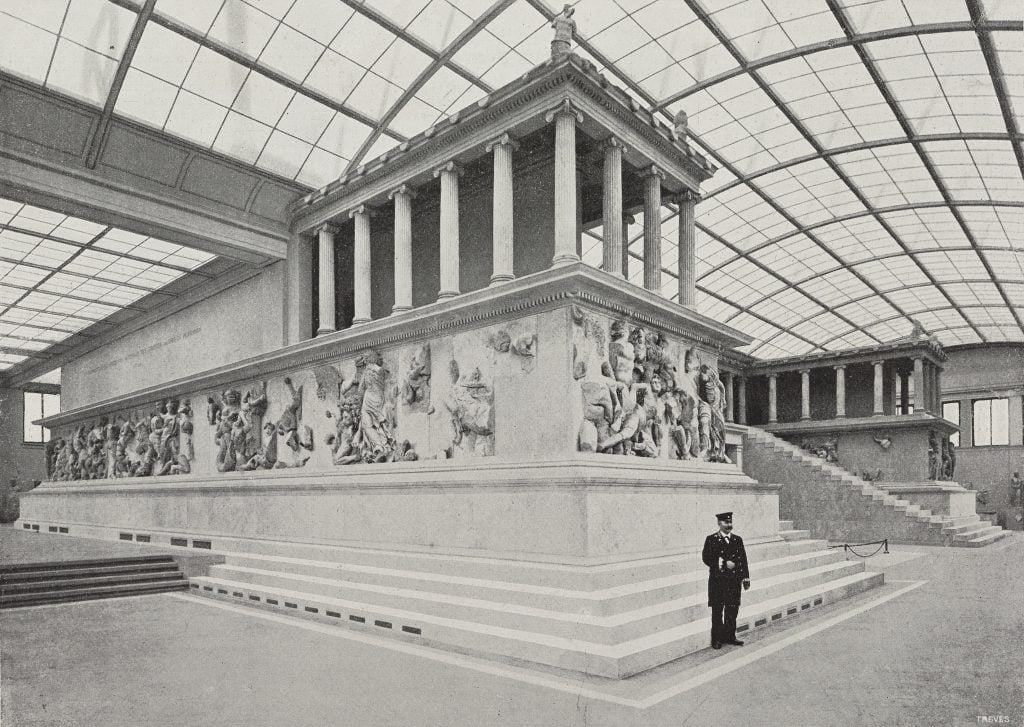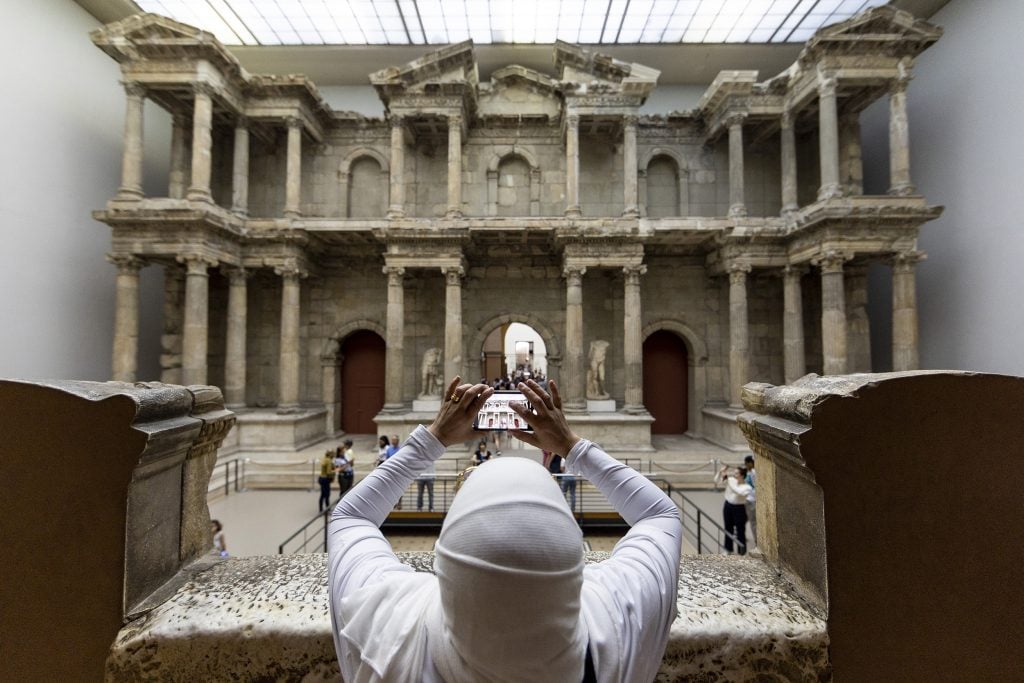Archaeology & History
Huge! A Giant Altar to Zeus in the Middle of Berlin
Berlin’s Pergamon Museum has rejected calls to return the giant altar to its place of origin.

In 1878, German engineer Carl Humann began excavations in western Turkey at the ancient Greek city of Pergamon. During the eight-year-long effort, Humann and his team found numerous artifacts, but their most impressive discovery was a giant altar constructed by King Eumenes II in the early second century B.C.E.
While archaeologists continue to debate the altar’s original purpose, most believe it was part of a temple of Athena or Zeus, and may have even been used as a site of religious sacrifice. Temple or not, Humann and his successors were determined to bring the altar back to Germany. To this end, each newly uncovered part of the construction was broken up, shipped to Berlin, and carefully reassembled.

The excavation site of Pergamon with the Trajaneum. Photo: Jens Kalaene//picture alliance via Getty Images.
This was no small feat, as the fully assembled altar proved an impressive 118 feet wide, 111 feet deep, and 40 feet high. The structure also has a five-level base, an inner court, and a 360 feet-long frieze depicting the Gigantomachy, the famous mythological battle between the Giants and the Olympian gods.
The altar includes dozens upon dozens of panels depicting other scenes from Greco-Roman mythology, including: Auge, daughter of Tegean King Aleus and virgin priestess of Athena, founding a cult dedicated to the goddess; Heracles finding and identifying his lost son Telephus; Telephus voyaging to Mysia in Asia Minor by ship; and two Scythian warriors engaged in combat.
Today, the Pergamon altar is housed inside Berlin’s Pergamon Museum, an exhibition hall on the city’s Museum Island known for its full-scale reconstructions or Greek and Roman architectural monuments.

The altar of Zeus at the Pergamon Museum in Berlin, Germany, photo by Zander and Labisch, from L’illustrazione Italiana, Year XXIX, No 3, January 19, 1902.
Originally built at the beginning of the 20th century as the Kaiser-Friedrich-Museum to show the German Empire’s imperial spoils, it was replaced by a bigger building designed by architect Alfred Messel. Constructed between 1910 and 1930, the new, three-winged Pergamon Museum is a well-known example of Stripped Classicism, an offshoot of Neoclassicism that strips ancient Greco-Roman architecture of ornamentation, giving it a vaguely modern, totalitarian appearance.
The Pergamon Museum houses three distinct collections: the Antikensammlung or Antiques Collection, which includes the Pergamon altar; the Vorderasiatisches Museum or Middle Eastern Museum; and the Museum für Islamische Kunst or Museum of Islamic Art.

Visitors photograph the Roman-era Market Gate of Miletus, ca. 100 AD, at the Pergamon Museum on June 08, 2023 in Berlin, Germany. Photo: Maja Hitij/Getty Images.
In addition to the altar, the Pergamon museum also houses reconstructions of such ancient monuments as the Market Gate of Miletus, a 95 feet wide, 55 feet tall façade built during the 2nd century C.E. in western Turkey, and the Processional Way from Babylon, a more than 2,500 feet long brick avenue from the 6th century B.C.E. featuring relief images of the Babylonian goddess Ishtar, the dragon Marduk, the bull of storm god Ahad, and various other creatures and deities.
The Pergamon Museum closed in October 2023 for renovations that are set to continue until the spring of 2027, when the museum is scheduled to reopen to the public. The building has been renovated several times before, as some of its older sections are prone to moisture damage. Recent reports, however, have found that the renovation is way behind schedule and according to Der Spiegel, could take until 2037 to complete.
Similar to other museums in Europe, the renovation coincided with mounting calls inside and outside Germany for the institution to return the altar and other artifacts to their places of origin—calls the museum’s management has thus far rejected.
Sometimes, archaeology gets big. In Huge! we delve deep into the world’s largest, towering, most epic monuments. Who built them? How did they get there? Why so big?





